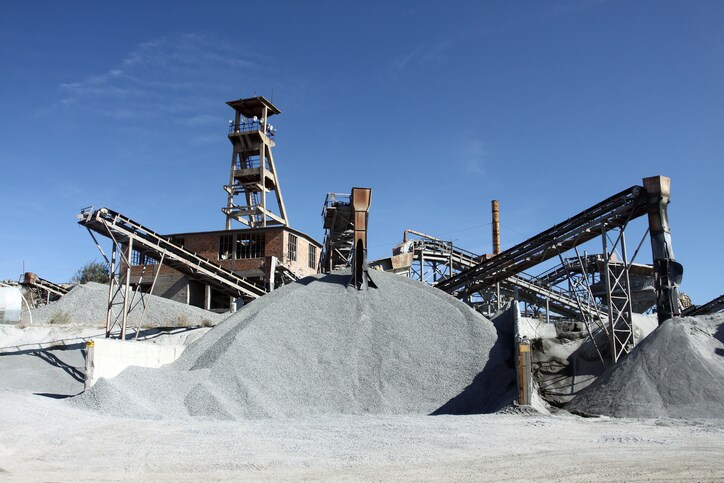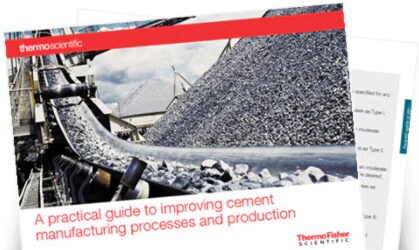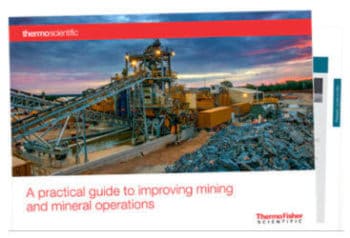 Many people use the words cement and concrete interchangeably. However, these are actually two, somewhat different things. Cement is the grey powdery stuff that when mixed with sand, rock, gravel and water forms concrete. The concrete is the final product used in buildings, roads, infrastructure, etc. You can think of cement as the “glue” that holds the sand and gravel and re-bar (reinforcement bar) together to make concrete.
Many people use the words cement and concrete interchangeably. However, these are actually two, somewhat different things. Cement is the grey powdery stuff that when mixed with sand, rock, gravel and water forms concrete. The concrete is the final product used in buildings, roads, infrastructure, etc. You can think of cement as the “glue” that holds the sand and gravel and re-bar (reinforcement bar) together to make concrete.
Cement manufacturers mine and process raw materials and put them through a chemical reaction process to create cement. They need to understand the chemical composition of the raw materials so that the reaction in their process takes place correctly and they make good, high quality cement that will eventually be used to make concrete by contractors and “ready-mix” companies.
You might think of a cement manufacturing facility as an extension to a mining operation, as cement plants are typically located central to the minerals required to make the cement, which saves the transportation costs and reduces the price of the cement.
Limestone is one of the key minerals used in cement making. Limestone is a sedimentary rock composed mostly of the calcium carbonate (CaCO3) and, according to the Mineral Education Coalition, comprises about 15% of the Earth’s sedimentary crust. Surface mining is the general excavation method. There are a few underground limestone mines, but most are pits on the surface. These limestone mines are found in places you might not think to look. The American Geosciences Institute reports that Iowa – which is usually known for its corn — produces about 35 million tons of raw materials from its pits and quarries where gravel deposits and limestone bedrock are close to the land surface.
Cement manufacturers depends on these mines, and others that provide additional minerals. According to Mine-Engineer.com,
“Cement manufacture, like many other manufacturing processes, begins at the mine, where the raw materials like limestone, silica, aluminates, feric minerals and others are obtained. Some typical materials used for calcium carbonate in cement manufacturing are limestone, chalks, marbles, marls, and oyster shell. Some typical materials used for alumina in the cement manufacturing are shale, clay, slags, fly ash, bauxite, alumina process waste, and granite. Some typical materials used for silica in cement manufacturing are sand, clay, claystone, shale, slag, and fly ash. Some typical materials used for iron in cement manufacturing are iron ores, blast furnace flue dusts, pyrite clinker, mill scale, and fly ash.”
Cement manufacturers must process the selected and prepared mineral raw materials to produce the synthetic mineral mixture (clinker) that can be ground to a powder having the specific chemical composition and physical properties of cement.
There are different types of cements, with differing compositions, depending upon use. As we noted in a previous article, The Cement Manufacturing Process, to ensure quality and correct composition, several laboratory and online systems utilizing sophisticated technologies must be employed.
Online elemental analyzers provide high frequency online elemental analysis of the entire raw material process stream using Prompt Gamma Neutron Activation Analysis (PGNAA) or Pulsed Fast Thermal Neutron Activation (PFTNA). With the option to use either a neutron generator or a radio-isotope for excitation, the system delivers consistent stockpile and raw mix chemistry improving kiln efficiency and minimizing production costs.
Some technologies enable you to achieve excellent process control and save fuel in your cement plant with both chemical and phase analysis in one simple operation. A cement analyzer can combine X-Ray Fluorescence (XRF) and X-Ray Diffraction (XRD) technologies for a better and more complete characterization of any given crystalline sample. Various compounds can be controlled like quartz in raw meal, hot meal, free lime in clinker, clinker phases, additions in cement, e.g. limestone, GBFS or pozzolan or even clinker content in cement. Clinker phase analysis ensures consistent clinker quality, which is the key to high-performance concrete.
Cement quality control laboratories face demanding elemental analysis requirements to determine major and minor oxides in clinker, cement and raw materials such as limestone, sand and bauxite. Some cement analyzers in the lab use dispersive X-ray elemental analysis technology and can be pre-configured for dedicated cement applications that can help ensure high precision, outstanding repeatability and stability.
You can read more about these technologies in our Cement, Coal & Minerals Learning Center and in the articles listed below.
It’s obvious that since cement is one of the main ingredients of concrete, it is vital to construction materials. The concrete must have high compressive strength, fire resistance, moldability, impermeability and durability, so knowing the composition is essential. Lives are at stake. If the concrete for houses, hospitals, schools, offices, shops, roads, bridges, and dams fails, it could have catastrophic consequences. Safety starts with quality cement that meets specifications, because it’s the glue that holds everything together.
Visit our Cement, Coal & Minerals Learning Center for additional cement analysis information.
Additional Reading:
- Read XRF/XRD Combined Instrumentation Can Provide Complete Quality Control of Clinker and Cement to learn more about technology that combines the advantages of both XRF and XRD together.
- Read Analysis of Clinker and Cement with Thermo Scientific ARL OPTIM’X WDXRF Sequential Spectrometer to learn why XRF is the technique of choice for elemental analysis in cement industry.
- Read PGNAA Improves Process and Quality Control in Cement Production to learn what makes PGNAA particularly suited for cement analysis.





Good Location and limestone reserves for cement plant and rare earth materials to mine